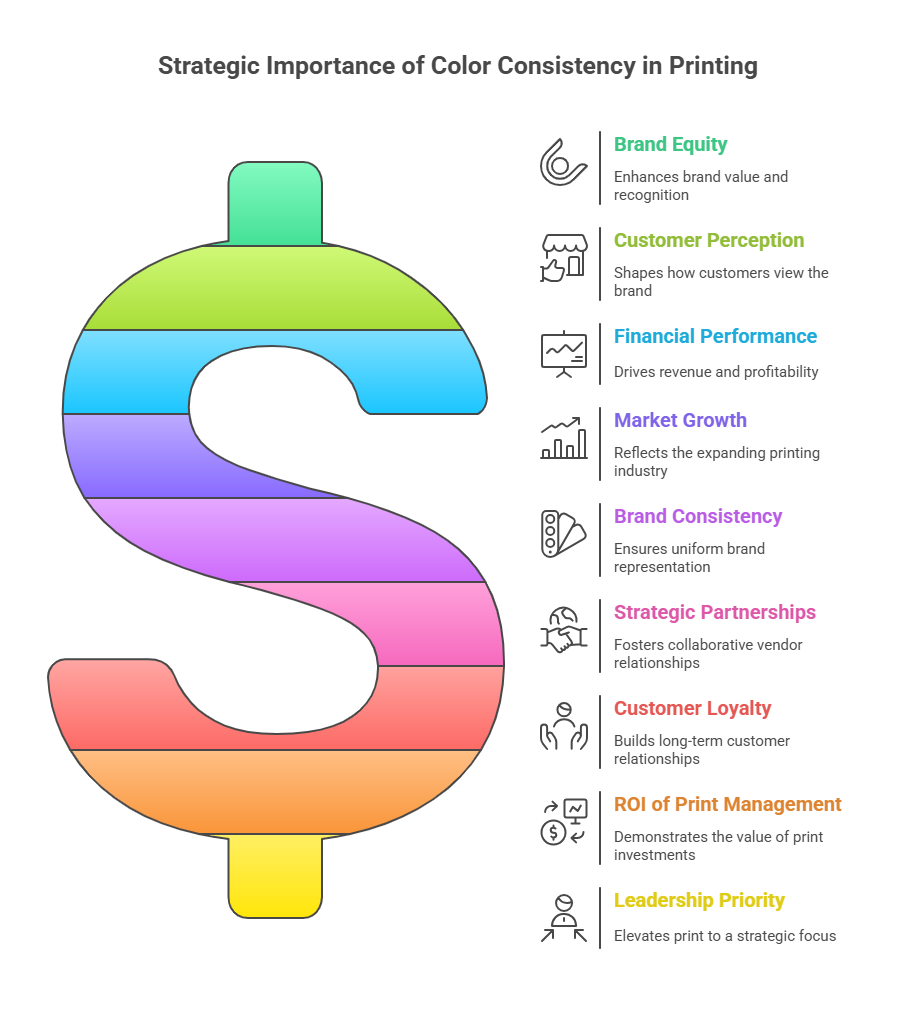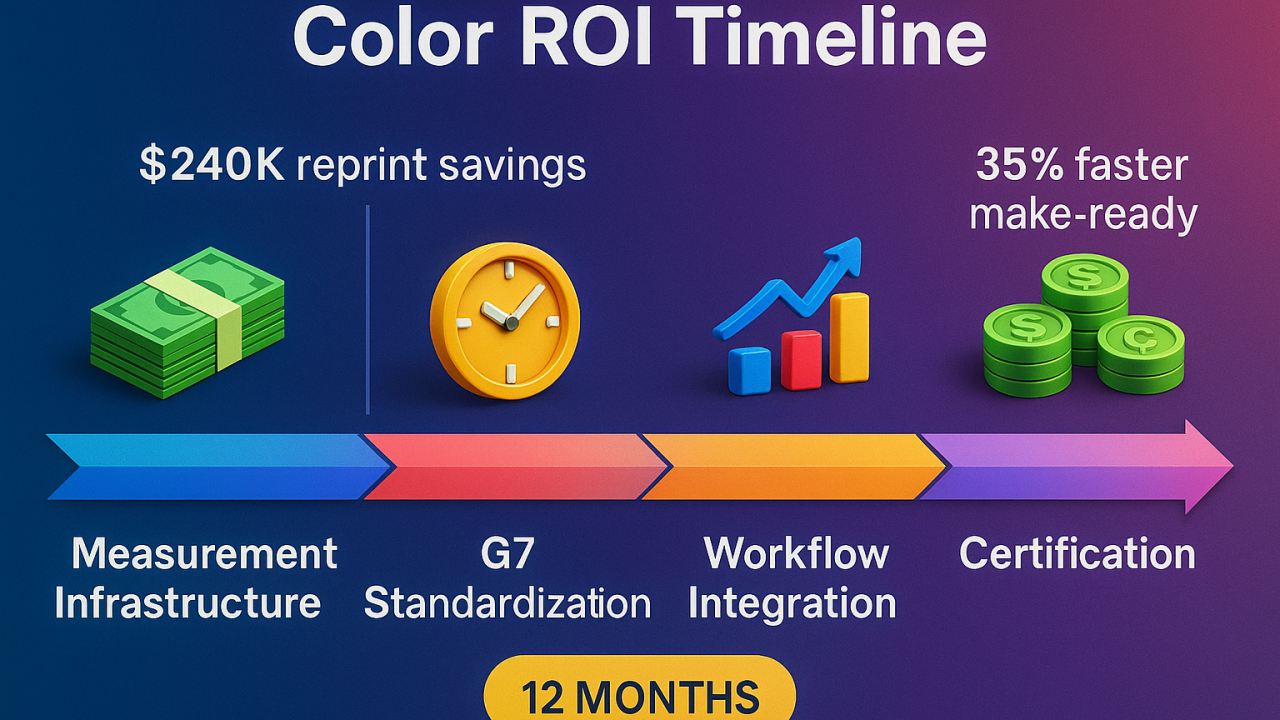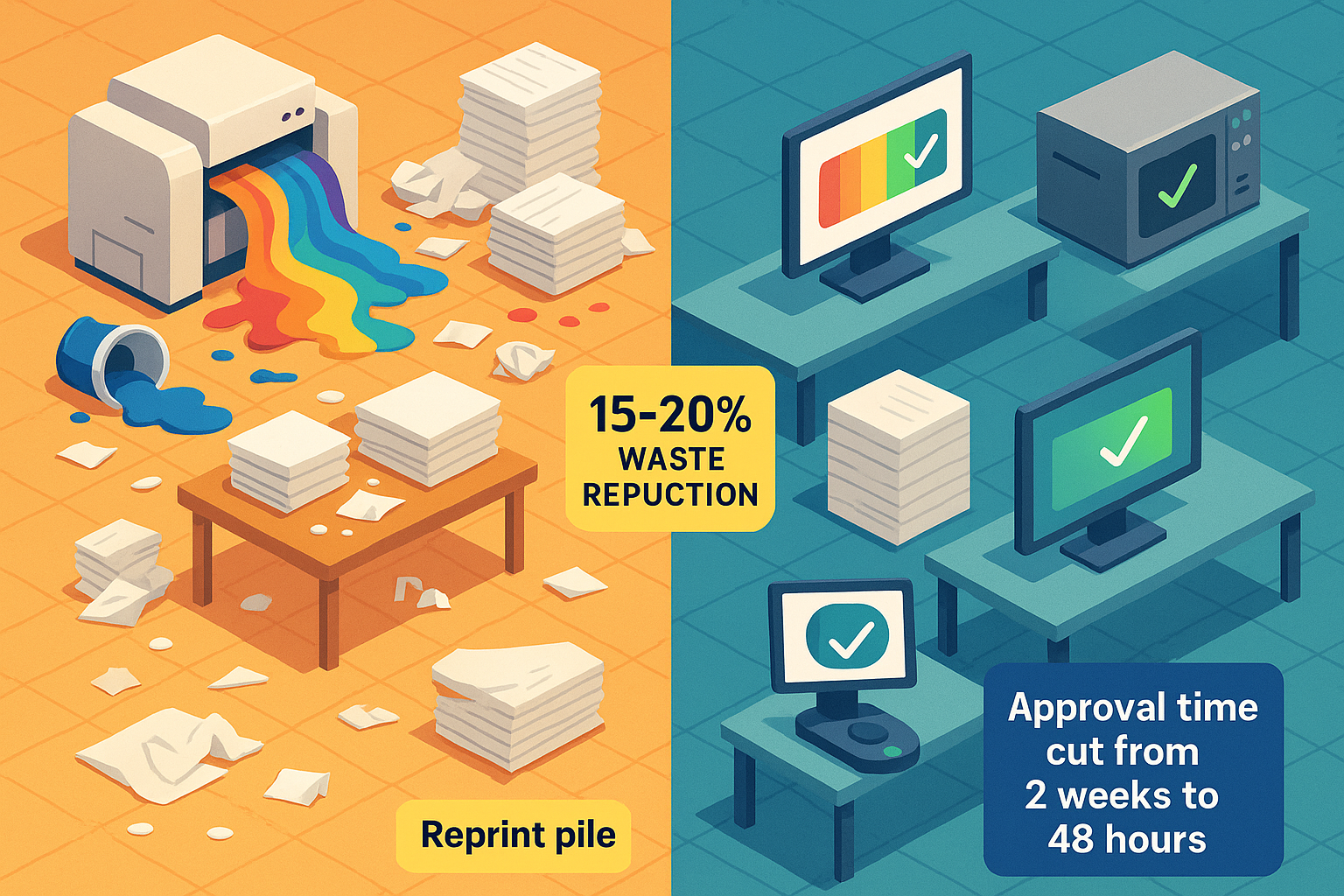Building Your Color Management Infrastructure
I explained in the last newsletter why color management drives business results. Now, let me show you exactly how the leading operations build their competitive advantage through smart technology choices.
The Measurement Foundation
Everything starts with accurate measurement, and I've learned that most operations underinvest here. You have three primary options:
Spectrophotometersrepresent your premium choice. Yes, they cost more upfront, but I've watched operationsrecoup their investment within 4-6 monthsthrough reduced reprints alone. Modern units like Techkon's SpectroDens integrate densitometer functions, giving your press operators comprehensive insights without switching between devices.Densitometershandle basic color control effectively and cost significantly less. If you're running straightforward CMYK work without critical spot color matching, these deliver solid ROI.
Colorimeterswork well for display calibration but rarely justify their place in production environments.
Here's my recommendation:Start with a quality spectrophotometer for your primary press and add densitometers for secondary equipment.The data consistency you'll gain pays for itself quickly.
The Software Integration Game-Changer
This is where I see the biggest gaps in most operations. Buying measurement hardware without integrated software is like buying a Ferrari and only using first gear.
Closed-loop systemsrepresent the gold standard. Techkon's PressLink exemplifies this approach—spectrophotometers connected directly to press-side ink key consoles, automating the entire measurement and adjustment cycle. I've documented 60-70%Closed-loop systemsrepresent the gold standard. Techkon's PressLink exemplifies this approach—spectrophotometers connected directly to press-side ink key consoles, automating the entire measurement and adjustment cycle. I've documented 60-70% reductions in make-ready times with these systems.
Workflow automation softwarelike Print ePS and Xerox FreeFlow eliminates the manual handoffs that create errors and delays. When you integrate color management across your entire workflow, you eliminate data silos and reduce touch points where mistakes happen.
The key insight I want you to grasp:integrated systems deliver exponential returns compared to point solutions. Don't piece together separate tools—invest in platforms that connect your entire workflow.
ICC Profiles: Your Universal Translator
Think of ICC profiles as the universal language that makes your diverse equipment speak to each other accurately. Every device in your workflow—cameras, monitors, scanners, printers—has unique color characteristics. ICC profiles capture these differences and enable precise color translation between devices.
I've watched operations transform their soft proofing accuracy from 70-80% to 95%+ simply by implementing proper ICC profile management. When your clients can approve work confidently on calibrated monitors, you eliminate most physical proof cycles and their associated costs.
Best practices I recommend:
- Apply profiles consistently across all workflow devices
- Calibrate equipment regularly (monthly minimum)
- Monitor color accuracy continuously and adjust profiles as needed
Industry Standards That Open Doors
G7 certificationcreates a common language across your supply chain. When you're G7 certified, you can collaborate seamlessly with other certified partners, expanding your potential client base and enabling more complex projects.
Fogra certificationprovides independent validation of your capabilities. I've seen certified operations command 15-20% premium pricing for color-critical work simply because clients trust their quality standards. Both certifications require investment, but they also create barriers your competitors must overcome to compete with you effectively.
Next edition, I'll share the real-world implementation strategies and ROI calculations that help you build your business case and execute successfully.












